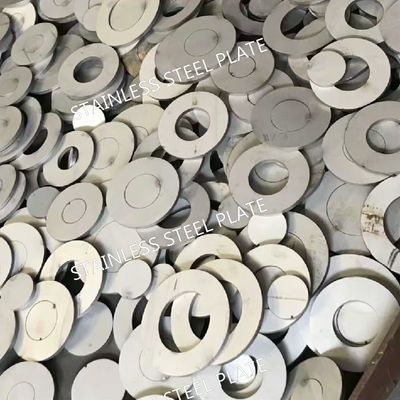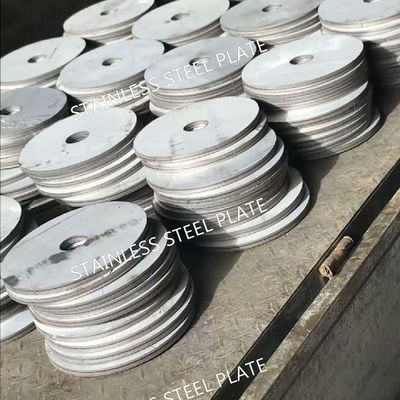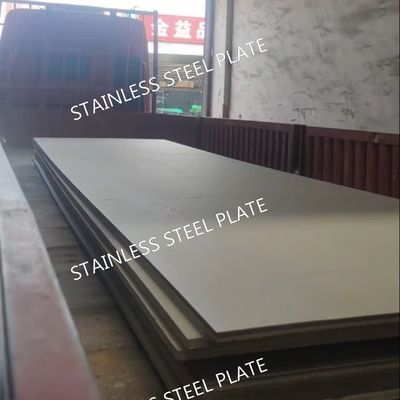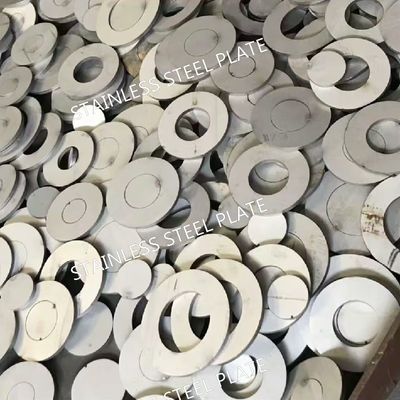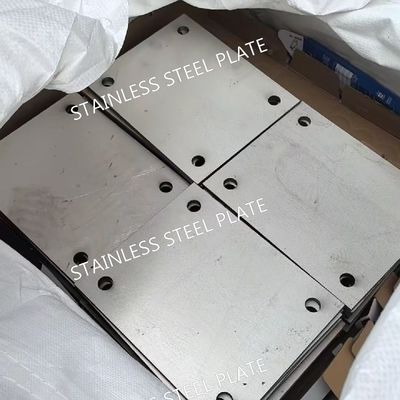-
Striscia di acciaio inossidabile
-
Strato di acciaio inossidabile
-
Piatto di acciaio inossidabile
-
tubo di acciaio inossidabile
-
Acciaio inossidabile Antivari
-
Bobina d'acciaio galvanizzata
-
Piatto d'acciaio
-
tondino d'acciaio
-
lega di nichel
-
Tubo d'acciaio senza cuciture
-
Fascio di acciaio inossidabile
-
Strato del piatto di rame
-
Tondino di rame
-
 Raian IonescuQualità materiale molto buona. abbiamo cooperare più di 10 anni. Vendono i generi dei lotti di materiale d'acciaio. Tutta la qualità materiale buona. Essi dovere per tutta la qualità materiale. Stiamo spianando per continuare a cooperare in futuro con loro
Raian IonescuQualità materiale molto buona. abbiamo cooperare più di 10 anni. Vendono i generi dei lotti di materiale d'acciaio. Tutta la qualità materiale buona. Essi dovere per tutta la qualità materiale. Stiamo spianando per continuare a cooperare in futuro con loro
ASTM A240 317L Stainless Steel Sheet Premium Marine Grade Material
| Luogo di origine | Cina |
|---|---|
| Marca | BAOSTEEL TISCO |
| Certificazione | ISO |
| Numero di modello | 317L / S31703 |
| Quantità di ordine minimo | 50 kg |
| Prezzo | 5 - 8 USD/Kg |
| Imballaggi particolari | imballaggio standard per l'esportazione |
| Tempi di consegna | 5 - 12 giorni in base alla quantità |
| Termini di pagamento | L/C, T/T, Western Union |
| Capacità di alimentazione | 20ton a settimana |

Contattimi gratis campioni e buoni.
Whatsapp:0086 18588475571
Wechat: 0086 18588475571
Skype: sales10@aixton.com
Se avete di preoccupazione, forniamo la guida in linea di 24 ore.
x| Prodotti | lamiere di acciaio inossidabile | Grado | 317L/S31703 |
|---|---|---|---|
| Spessore | 1,0-80,0 mm | Tecnologia | laminato a freddo, laminato a caldo, forgiato |
| Larghezza | 1000mm 1219mm 1500mm o abitudini come richiesta | Superficie | 2B SEDERE No.1 |
| Standard | BACCANO DELL'EN DI ASTM GB JIS | MOQ | 1 tonnellata |
ASTM A240 317L Stainless Steel Sheet Premium Marine Grade Material
Stainless Steel Sheet Specifications
| Name | 317L stainless steel sheet |
| Our Grade |
200 Series: 201 202 300 Series: 301 304,304L,304H,309S,310S,314,316L,316Ti,316H,316LN,317L,321,329,347 400 Series: 409L,410,410S,416,420,430,431,436L.439,441,443,444,445,446 Super Stainless Steel: 904L,926,254SMO,654SMO,15-5PH,17-4PH,17-7PH.etc Nickel Alloy: C276, C22,G35,Alloy X,Monel 400,K500,Inconel 600,601,617,625,718,Incoloy 800,800H,800HT,825.etc |
| Technique | Hot Rolled, Cold Rolled,Forged |
| Standard | JIS, AISI, ASTM, DIN, TUV, BV, SUS, etc |
| Thickness | 0.1 – 80.0mm |
| Width range | 10mm – 2000mm |
| Length | Customized |
| Finish | 2B, BA, No.4, 8k, Brushed,Hairline,PVD Coating,Sandblasted |
| Service | Laser Cutting, Bending |
| Sample | Available |
ASTM A240 317L Stainless Steel Sheet – Premium Marine Grade Material
Introduction
Selecting the right material for maritime, offshore, and coastal applications demands excellent resistance to corrosion, chlorides, and long-term durability. The specification titled “317L Stainless Steel Sheet – ASTM A240 / ASME SA240” describes a low-carbon, high‐molybdenum austenitic stainless steel designed for demanding environments. This article explores this grade’s composition, mechanical and corrosion‐resistant properties, fabrication behaviour, and why it qualifies as a “premium marine grade” material.
Specification & Grade Overview
-
The material falls under the standard specification ASTM A240 / ASME SA240 which covers chromium-nickel and chromium-nickel-molybdenum stainless steel plate, sheet and strip for pressure vessel and general‐application use.
-
The grade in question is designated as 317L stainless steel (UNS S31703).
-
The “L” suffix stands for low carbon (typically ≤ 0.03 %–0.04 % C) to reduce sensitisation (carbide precipitation) during welding or high temperature service.
-
This makes 317L a suitable choice for welded constructions exposed to marine and coastal conditions, where high chloride exposure and wet/dry cycles challenge material integrity.
Chemical Composition
Below is a representative chemical composition table of 317L stainless steel sheet according to specification sources:
| Element | Typical / Maximum Content |
|---|---|
| Carbon (C) | ≤ 0.03 % (low carbon) |
| Manganese (Mn) | ≤ 2.0 % |
| Silicon (Si) | ≤ 1.0 % |
| Phosphorus (P) | ≤ 0.045 % |
| Sulfur (S) | ≤ 0.030 % |
| Chromium (Cr) | 18.0 %-20.0 % |
| Molybdenum (Mo) | 3.0 %-4.0 % |
| Nickel (Ni) | 11.0 %-15.0 % |
| Iron (Fe) | Remainder (≈ ≥ 57.9 %) |
Why these alloying elements matter for marine grade service:
-
Chromium (Cr) forms a stable passive oxide layer, providing baseline corrosion resistance.
-
Nickel (Ni) stabilises the austenitic structure, improving toughness, ductility and weldability in harsh conditions.
-
Molybdenum (Mo) at 3-4 % significantly enhances resistance to pitting and crevice corrosion, which is key for marine and chloride‐rich environments.
-
Low carbon reduces the risk of intergranular attack following welding or heat exposure — especially relevant in structural assemblies.
Mechanical & Physical Properties
For 317L sheet in this specification, typical mechanical properties include:
| Property | Typical Value |
|---|---|
| Tensile Strength (min) | Approx. 515 MPa (≈ 75 ksi) |
| Yield Strength (0.2%) | Approx. 205 MPa (≈ 30 ksi) |
| Elongation (min) | ≈ 35 % in 50 mm gauge |
| Density | ~ 7.9 g/cm³ |
Physical aspects: the plate/sheet can be supplied in widths and lengths compatible with large‐format marine components; available thickness ranges commonly from 4 mm to 100 mm or more.
From a marine perspective, these mechanical attributes ensure the material can withstand structural loads, cyclic stresses, and tough environmental exposure, while maintaining ductility and resistance to cracking.
Marine Grade Suitability – Why 317L is Premium
When thinking of “marine grade” stainless steel, one typically considers exposure to salt‐laden air, seawater spray, splash zones, humidity cycles, and welds exposed to corrosive service. Here’s how 317L performs under those conditions:
-
Superior chloride/pitting resistance
Thanks to its elevated molybdenum and nickel content, 317L offers a significant step up in resistance to pitting and crevice corrosion compared to typical marine grades like 316/316L. -
Welded structures and low carbon advantage
Marine fabrication often requires complex welded assemblies (hulls, decks, structural supports). The low carbon in 317L reduces the risk of sensitisation in weld heat affected zones (HAZ), thus preserving corrosion resistance in welded joints — a common failure point in marine environments. -
Durability in harsh, cyclic environments
Marine components experience alternating wet and dry conditions, salt deposition, acidic fumes and thermal cycling. 317L’s robust chemistry helps it maintain passivity and structural integrity under such cyclical stresses. -
High temperature and coastal service
While many marine environments are not high‐temperature, certain offshore or near‐shore installations involve equipment exposed to heat, humidity and salt combined. 317L’s stability at elevated temperature gives additional margin.
Therefore, the designation of 317L sheet as a “premium marine grade” material is justified by its enhanced corrosion resistance, weldability, and long‐term durability in aggressive marine/coastal environments.
Typical Dimensions, Finishes & Availability
Marine and offshore fabricators often require sheet/plate in formats suited for large structures. Here is a summary of typical availability:
-
Thickness range: From ~4.0 mm up to ~100 mm or more for plates.
-
Width/length: Standard sizes such as 1000 × 2000 mm, 1220 × 2438 mm (4′×8′), 1500 × 3000 mm, 2000 × 4000 mm, etc.
-
Surface finishes: 2B, 2D, BA (bright annealed), NO. 1, NO. 4, NO. 8 (mirror), hairline, sand-blast, checkered plate etc.
-
Forms: Coils, sheets, plates, strips, perforated sheet, chequered plate etc.
For marine fabrication, sheets may be cut, folded, welded and further processed into structural plates, hull panels, superstructure elements, sea‐water piping supports, or decorative architectural features in coastal installations.
Fabrication, Welding & Best Practices for Marine Use
To fully leverage the premium grade properties of 317L sheet in marine service, attention to fabrication and maintenance is key:
-
Welding: Use appropriate filler metals (e.g., matching 317L or equivalent) and ensure good heat control. The low carbon helps avoid post-weld sensitisation, but proper procedure is still essential.
-
Forming and cold work: The alloy is ductile and formable, but higher alloy content means work-hardening rate may be higher than simpler stainless steels — plan tool selection accordingly.
-
Surface preparation & passivation: After fabrication, ensure pickling or passivation to restore the chromium oxide barrier and remove weld scale. For marine exposures, a clean and well‐passivated surface enhances longevity.
-
Avoiding crevices and stagnant zones: Despite its improved corrosion resistance, design should still aim to minimise water entrapment, salt deposition and crevice formation (e.g., behind cladding, under bolts).
-
Inspection & maintenance: Given exposure to chlorides, regular inspection of welds, joints and interfaces is advised. Early detection of any corrosion allows intervention before major failure.
-
Material traceability and certification: Ensure the sheet/plate carries certification to ASTM A240/SA240, with test reports for chemical & mechanical properties — this is especially critical for marine and offshore environments where failure consequences are high.
Applications in Marine and Coastal Environments
Here are typical use-cases where 317L stainless steel sheet excels:
-
Shipbuilding: hull plating and interior structural panels in salt spray zones or when extra corrosion resistance is desired.
-
Offshore platforms: structural plates, decks, walkways and support frames exposed to sea air, splash zones, fog and brine.
-
Marine / port equipment: gangways, platforms, walkways, ladders, sea‐water piping supports, and handrails.
-
Desalination plants and marine‐based chemical processing: where sea‐water and brine contact structural sheets or vessels require superior corrosion resistance. Some commentary notes:
-
Coastal architecture & exteriors: facades, sunscreens, balconies and structural cladding in sea‐coast regions where salt laden air demands premium material.
Comparison With Other Marine Stainless Grades
Here is a quick comparison of 317L vs some commonly used marine stainless grades:
| Grade | Molybdenum Content | Chloride/Pitting Resistance | Suitable Cost-Level for Marine |
|---|---|---|---|
| 316/316L | ~ 2-3 % | Moderate | Standard “marine grade” |
| 317L | ~ 3-4 % | Higher | Premium marine choice |
| Duplex/ Super‐austenitic | Variable (> 4 % Mo) | Highest | High‐end, more expensive |
From these comparisons, 317L occupies a “premium” niche: more robust than standard marine grade 316L, but less exotic (and less costly) than super‐austenitic or duplex alloys. If the service environment is severe (e.g., splash zone, chlorinated cooling water, salt‐spray/humid cycles), upgrading to 317L sheet can deliver better longevity and fewer maintenance interventions.
Specification & Purchasing Checklist
When specifying 317L stainless steel sheet for marine or coastal service, include:
-
Material grade: 317L (UNS S31703) under ASTM A240 / ASME SA240
-
Thickness, width, length, finish: e.g. 4 mm thick × 1500 × 3000 mm size, 2B finish (or specify required surface).
-
Surface finish requirement: If decorative or exposed, specify BA / NO.8 / hairline etc. If structural, standard 2D/2B may suffice.
-
Heat treatment/anneal state: Typically fully annealed and pickled to restore corrosion resistance.
-
Weldability and fabrication requirements: Indicate welded construction, any special weld filler metal or post‐weld passivation.
-
Certification: Manufacturer’s test certificate showing chemical composition, mechanical properties, traceability, and compliance with ASTM A240.
-
Corrosion service conditions: Document anticipated environment (salt‐spray, marine atmosphere, splash zone, chlorides) to ensure appropriate grade selection.
-
Maintenance & inspection regime: Even premium materials benefit from design that facilitates maintenance access, inspection and cleaning of salt buildup.
Using this checklist helps ensure that what you purchase and install is truly “marine‐grade premium” and suited to the site conditions.
Summary
In summary, the product “ASTM A240 317L Stainless Steel Sheet – Premium Marine Grade Material” offers a robust combination of enhanced corrosion resistance (especially in chloride/salt-exposed and welded structures), structural strength, and fabrication versatility. The key advantages include:
-
Elevated molybdenum and nickel content for improved pitting/crevice corrosion resistance
-
Low carbon content for better weldability and reduced sensitisation risk
-
Availability in sheet/plate form with marine-compatible finishes and sizes
-
Suitability for marine/coastal structural, equipment, and architectural applications
-
A step above standard marine grade 316/316L, positioning 317L as a premium choice without moving into exotic alloy cost territory
![]()
![]()
![]()
![]()



